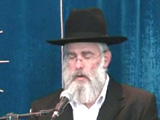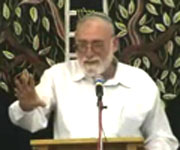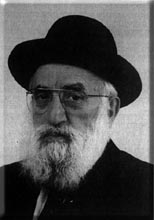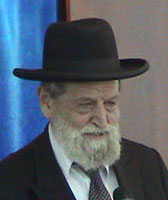Beit Midrash
- Sections
- Chemdat Yamim
- P'ninat Mishpat
Case: The plaintiff (=pl) bought an apartment on the second floor of a building in which the defendants (=def) previously bought a ground-floor apartment. The courtyard on the left side of the apartment is of interest to both pl and def but to no other neighbors. There are three basic disputes between the parties about their mutual rights. Each will be discussed for one installment.
Dispute #2: Pl claims that the courtyard is, as appears in the Tabu (Land Registry), joint property, and def’s using it as if the front part is personal property is illegal. Def responds that already when he bought his apartment, a physical separation had been installed, which gave his seller ownership to that section, as such a step is an act of kinyan. Since this arrangement was known to have existed for years, they benefit both from chazaka and from the legal statute of limitation. Since this took place before he was an owner, he does not need to provide details about the transaction that transferred that part of the courtyard to be an extension of the property that is now his.

P'ninat Mishpat (802)
Beit Din Eretz Hemda - Gazit
455 - P'ninat Mishpat: Multiple Agreements and Parties – part II
456 - P'ninat Mishpat: Late and Flawed Apartment
457 - P'ninat Mishpat: Did Any Furniture Go to the Buyer? – part II
Load More
Ruling: The Shulchan Aruch (Choshen Mishpat 194:2) rules that if the king requires a document for the sale of real estate, the other kinyanim do not suffice without a document. Since the government requires listing a real estate transaction (including changes in distribution of joint areas) in the Tabu, whatever def’s seller did was not halachically binding. Since there was not even a written contract about a transfer, pl does not have to agree to make changes in the Tabu. See the ruling along these lines by Rav Nissim, Rav Elyashiv, and Rav Zolti in Piskei Din Rabbaniim, vol. VI, p. 376.
Although the Chazon Ish (CM 16) says that there can be a valid kinyan without the Tabu, there need to be two valid witnesses who took part in the transaction, which def has not presented. Although def claims that his chazaka is evidence in lieu of witnesses, here chazaka doesn’t work because he has been using property in which he is at least a partner, so that neighbors do not need to protest to maintain the presumption of continued ownership (Shulchan Aruch, CM 179).
Def’s argument that he does not require evidence because the transaction occurred at the time of his seller is not a valid claim because the existence of the Tabu is like evidence against his claim. We would point out that the fact that the courtyard is divided in an inequitable manner also makes it difficult to believe that there had been a formal agreement.
Statute of limitation, in addition to the fact that it does not have a place in Halacha, is not applicable for another reason. The law does not apply to real estate ownership.
Therefore, neither pl nor def have the right to use the courtyard for nonstandard personal uses without permission from the other. Def thus cannot keep their dog in the courtyard and must remove the large container they use for various purposes unless they get permission from pl to keep it there.

P'ninat Mishpat: Did Any Furniture Go to the Buyer? – part II
based on ruling 84093 of the Eretz Hemdah-Gazit Rabbinical Courts
Beit Din Eretz Hemda - Gazit | Kislev 5786

P'ninat Mishpat: Late and Flawed Apartment
based on ruling 82174 of the Eretz Hemdah-Gazit Rabbinical Courts
Beit Din Eretz Hemda - Gazit | Kislev 5786

P'ninat Mishpat: Amounts and Conditions of Payment to an Architect – part IV
based on appeal of ruling 83061 of the Eretz Hemdah-Gazit Rabbinical Courts
Beit Din Eretz Hemda - Gazit | Sivan 5785


























